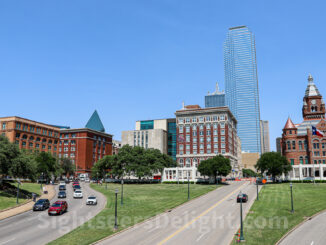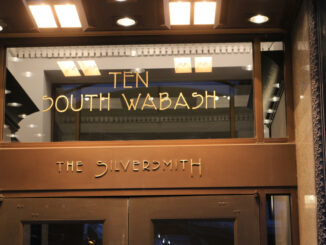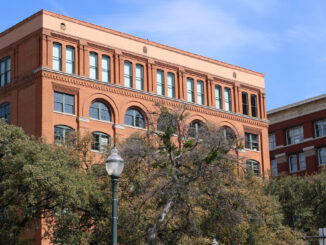DALLAS — Looking out the sixth floor window of the former Texas School Book Depository is a surreal experience. About 12:30 p.m. on Nov. 22, 1963, three shots rang out, killed a president and forever changed the course of history.
According to the Warren Commission, Lee Harvey Oswald fired three shots from the sixth floor of the Texas School Book Depository, killing President John F. Kennedy. The event remains as intriguing today as it did in 1963, and thousands of people visit historic Dealey Plaza ever year, hoping to connect with an event that remains seared in the nation’s collective mind.
Down below, the plaza looks much as it did more than 49 years ago – from the grassy knoll to the triple overpass to an open window on the sixth floor. A National Historic Landmark District since 1993, Dealey Plaza looks as if it’s frozen in time.
“It’s the real spot, unadulterated. It’s exactly as it was – almost – in 1963,” said Nicola Longford, executive director of The Sixth Floor Museum at Dealey Plaza. “I think a lot of people appreciate that.”
Today, tourists, amateur historians and conspiracy theorists come to Dealey Plaza in droves. Some pose for a picture on the infamous grassy knoll while others dodge traffic to stand in the exact location where a bullet fatally struck Kennedy, marked by an ‘X’ painted on the asphalt.
But, anyone looking to understand that day within the context of Dallas in 1963 must visit The Sixth Floor Museum at Dealey Plaza. The museum, originally opened in 1989, tells not only the story of Kennedy’s assassination and the aftermath of his death, but puts into context Kennedy’s visit to Dallas, which was in essence the first stop of his 1964 re-election campaign.
“The mission of the museum is to chronicle the assassination of President John F. Kennedy and to put it in context for a whole range of audiences and generations – people who lived through the assassination and the younger generations who were not alive and didn’t live through that chaotic weekend and the aftermath,” Longford said. “Our job is to present an ongoing narrative of the story of John F. Kennedy, his visit to Texas and the impact of his death and his legacy in a changing world today.”
The most powerful scene in the museum is arguably the reconstructed sniper’s perch. According to the Warren Commission, Oswald organized boxes containing schoolbooks into the perch; the museum based its reconstruction on photographs taken on Nov. 22, 1963.
While interest in Kennedy’s assassination has been strong since 1963, it’s growing for the 50th anniversary, to be marked this November.
“It’s an important year for us,” Longford said. “But, we just want to continue doing the work that we do, but even better to make sure that every person that comes to this site and comes through our doors has a powerful experience, a positive one from start to finish and that they have a better understanding of what happened here and how Dallas has changed in a positive way.”





